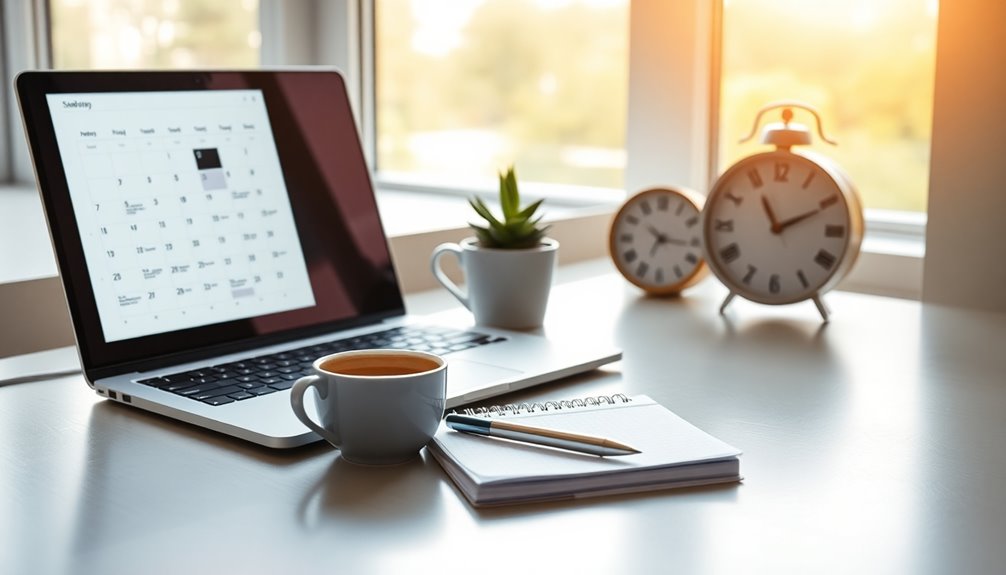In just 24 hours, you can master follow-up without coming off as desperate. Start by establishing a clear follow-up schedule, reaching out soon after initial meetings or proposals. Personalize your messages to connect better, using insights from your communication preferences. Mix channels, like email and social media, to keep the conversation lively and adaptable. Consider automating some processes to save time but guarantee you're actively listening and responding. Balance persistence with patience, adjusting your approach based on feedback. Keep refining your strategies, and you'll see the difference in engagement and trust. There's more to explore on effective follow-ups!
Key Takeaways
- Send initial follow-ups within 24 hours, but maintain a friendly and casual tone to avoid sounding overly eager.
- Personalize your message by referencing specific details from previous conversations to create a connection without pressure.
- Provide value in your follow-up by sharing relevant insights or resources that address the prospect's needs.
- Use varied communication methods, like email or SMS, to keep the conversation engaging and avoid overwhelming the prospect.
- Respect their time and communication preferences, allowing sufficient space for responses while maintaining consistent contact.
Establish Your Follow-Up Schedule
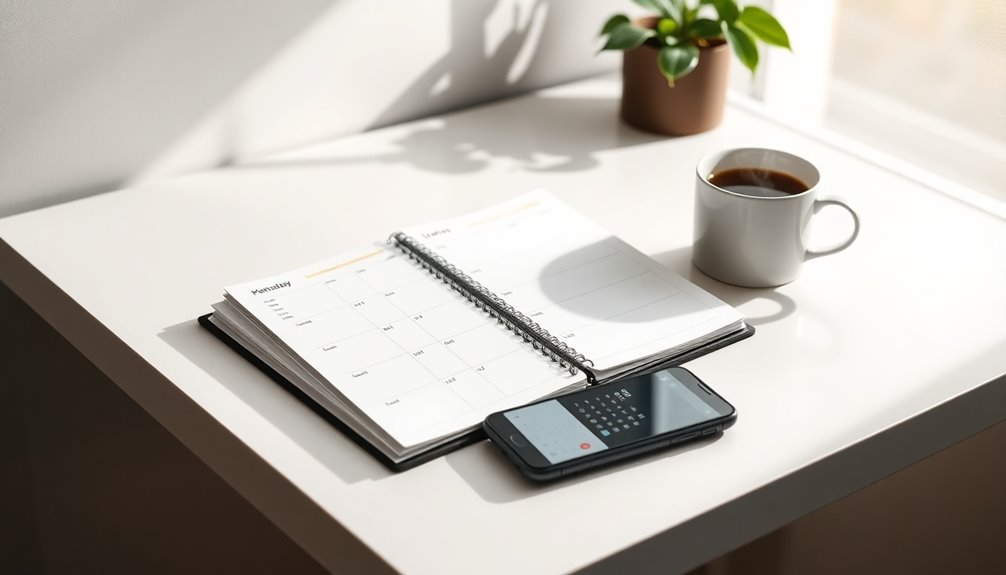
When you're trying to maintain a professional relationship, establishing a follow-up schedule is essential. Start by sending your follow-up the same day after a meeting whenever possible. If you're dealing with prospects in different time zones, adjust your timing to fit their working hours. After sending additional information or a proposal, follow up within 2-3 days to keep the momentum going. Avoid sending messages during busy periods, like the morning rush or the end of the workday, and steer clear of Mondays and Fridays for significant follow-ups, as they can be overwhelming.
Initially, contact your prospect 2 days after your first interaction, and then follow up every 7 days for the next two weeks. If you still haven't heard back, check in again after 14 days, then 30 days. Keep the communication going with monthly follow-ups if necessary. Consistent follow-up helps in building trust and credibility over time, which can significantly enhance your chances of converting prospects. To streamline this process, consider automating your follow-ups using tools like ActiveCampaign or CRM platforms. This way, you can efficiently manage your follow-up schedule while ensuring you stay in touch without sounding desperate.
Personalize Your Communication
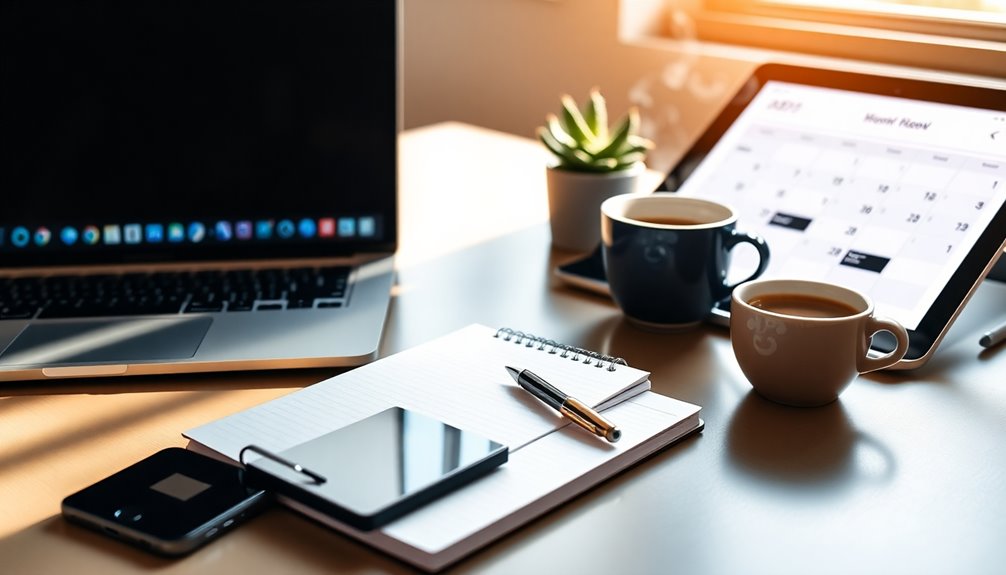
Personalizing your communication is essential for building strong relationships with prospects. Start by leveraging your CRM data to gain insights into customer behavior, like event registrations and product demos. This information helps you tailor your follow-up messages effectively. For instance, include the prospect's first name in the subject line to boost open rates by 29.3%.
Match your tone to the customer's personality, making your messages relatable. Begin with a personalized opening line that grabs attention. Use bullet points or numbered lists to present complex information in an easily digestible format. Additionally, budgeting effectively can help you allocate resources for your outreach and marketing efforts.
Focus on the specific needs of your prospects. Share valuable content that addresses their pain points and interests. Use storytelling to engage them emotionally and keep the conversation flowing. Data-driven segmentation allows you to identify customer personas for even more tailored communications.
Don't forget to ask about their communication preferences. Whether it's how they'd like to be addressed or their favorite channels, this shows you value their input. By tailoring your communication to suit each prospect, you not only enhance their experience but also increase your chances of achieving a positive outcome.
Utilize Multiple Channels
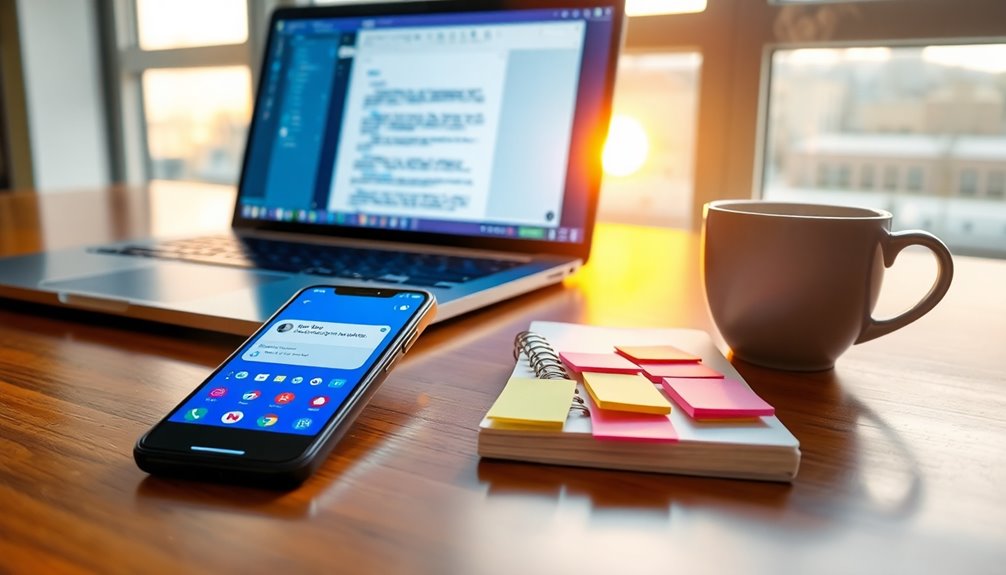
To effectively engage prospects, you need to utilize multiple channels in your follow-up strategy. Start by creating a unified brand message that adapts to each channel's unique characteristics. For instance, follow up with an email after connecting on LinkedIn to build on that initial interaction. It's crucial to coordinate your timing so that each channel complements the others. Additionally, having a structured program in place can help align your follow-up efforts with your overall business objectives.
Focus on channels that resonate with your target audience, such as email, SMS, and social media. Use data tools like CRM systems to track engagement and get a 360-degree view of your prospects. Incorporating advanced segmentation techniques allows for more tailored messaging that can significantly improve engagement. Monitor performance by setting clear objectives and key performance indicators (KPIs) to measure effectiveness across channels. Analyzing metrics like conversion rates will help you refine your approach.
Don't forget to align your sales and marketing teams. Regular meetings can foster collaboration and guarantee consistent messaging. Use technology to automate routine tasks, freeing up your time for more meaningful interactions. Finally, consider piloting your strategy with a small segment of your audience to test channels and messaging. This way, you can gather feedback and optimize your follow-up efforts for maximum impact.
Automate Follow-Up Processes
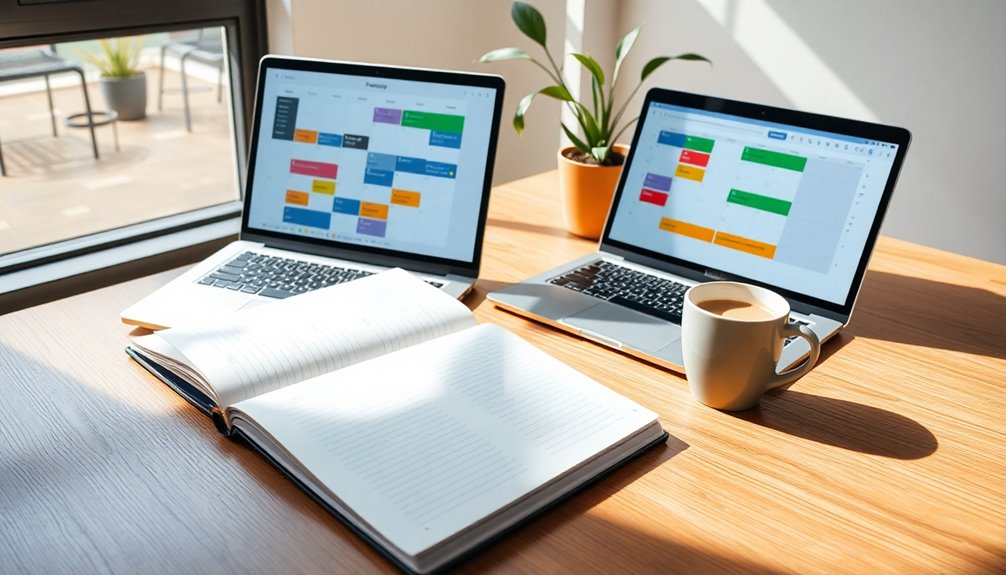
Many businesses struggle to keep up with follow-up communications, but automating these processes can transform your approach. Start by defining and evaluating your current lead follow-up process. Identify each stage, examine your lead capture methods, and analyze how you currently follow up. Knowing your response and conversion rates will provide valuable insights. Additionally, implementing a lead qualification process can help ensure that your follow-ups are targeted towards the right audience.
Next, choose and implement automated tools that integrate seamlessly with your existing tech stack, like Gmail or Salesforce. Configure these tools to handle each step of the follow-up process, setting up workflows for automated emails, SMS messages, and phone calls. Make sure to utilize analytics features to track and optimize performance.
Then, create and customize automated sequences tailored to different stages of your sales funnel. Develop email templates that include personalization elements and set up various touchpoints across multiple channels. Automate follow-ups based on specific triggers, ensuring that each lead segment receives appropriate communication.
Finally, monitor, adjust, and optimize your automated sequences using performance metrics. Regularly refine your process to boost response rates and conversions, ensuring your follow-up remains effective while sounding genuine and professional.
Engage in Active Listening

Active listening is essential for building strong connections and understanding others effectively. When someone speaks, give them your undivided attention. Look directly at the speaker, maintain eye contact, and acknowledge their message, including any non-verbal cues. Set aside distracting thoughts and resist the urge to prepare a rebuttal while they talk.
Show that you're listening by using body language and gestures. Nodding, smiling, and maintaining an open posture convey your engagement. Small verbal comments like "Yes" or "Aha" can encourage the speaker and keep the conversation flowing. In group settings, avoid side conversations that could detract from the speaker's words.
Provide feedback by paraphrasing what you've heard. Use phrases like, "What I'm hearing is…" and ask clarifying questions such as, "What do you mean when you say…?" This not only helps you understand better but shows the speaker you care. Remember to defer judgment; let them finish without interruptions. Treat them with respect and respond to their feelings to establish an empathetic relationship. Engaging in active listening creates a solid foundation for effective communication, as it enhances empathy and emotional connection between you and the speaker. Additionally, cultivating emotional alignment during conversations can deepen the connection and foster a more positive interaction.
Balance Persistence and Timing

Finding the right balance between persistence and timing can make or break your follow-up efforts. Start with more frequent follow-ups right after your initial contact, then gradually space them out. A good sequence might be one day after the first message, then three days, and finally a week. This approach prevents overwhelming your prospect while keeping you on their radar.
Respect your prospect's communication preferences and boundaries. Identify their preferred channel—be it email, phone, or text—and consider their stated timeline for follow-ups. Bombarding them with messages can backfire, so give them enough time to respond. If they seem unresponsive or uninterested, recognize when to pull back.
Each follow-up should provide value. Avoid repetition; instead, share new insights or resources that engage their interest. Personalizing your messages can align them more closely with their needs. Remember that consistency in follow-up timing builds trust and reliability, which can significantly foster a positive relationship.
Lastly, timing matters. Mix up your communication methods and consider the prospect's availability. Wait 3-5 business days between follow-ups, adjusting as necessary. By being mindful of persistence and timing, you'll enhance your chances of a successful follow-up without coming off as desperate.
Measure and Adjust Strategies
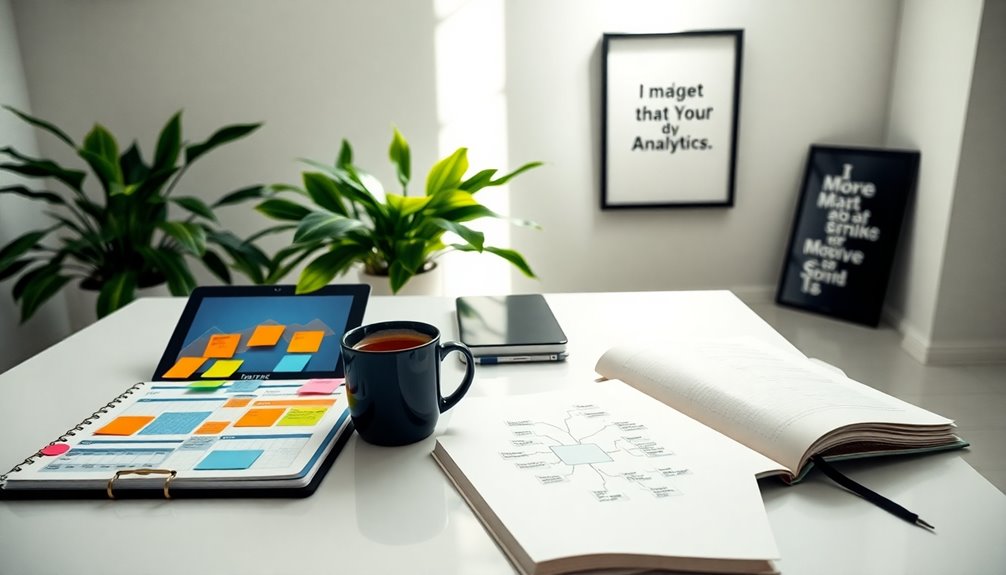
To effectively measure and adjust your follow-up strategies, start by tracking key performance metrics that reveal how well your efforts resonate with prospects. Focus on open rates, click-through rates, and conversion rates to evaluate your follow-up effectiveness. Utilize analytics tools to monitor these metrics and gain insights into your campaigns. Understanding small mistakes can help you avoid common pitfalls in your follow-up approach.
Leverage CRM tools to track client interactions, preferences, and history. This way, you can automate parts of your follow-up process and guarantee consistency in your outreach efforts. Monitor engagement metrics like time on page, and compare current data against historical trends to identify what's working and what's not.
Regularly evaluate your sales follow-up techniques and collect feedback from leads. Use this information to refine your strategies. Adjust the frequency and timing of your follow-ups based on client response patterns. Personalize your messages, share valuable content, and utilize various communication channels to enhance your outreach. Timely and personalized interactions are essential for nurturing leads and improving engagement.
Finally, consider client feedback surveys to gauge the success of your follow-up strategies. By continuously measuring and adjusting based on data-driven insights, you'll improve your chances of connecting with prospects without sounding desperate.
Frequently Asked Questions
How Do I Know if My Follow-Up Is Too Frequent?
You can tell if your follow-up is too frequent by paying attention to your leads' reactions. If they express frustration or ask you to contact them less often, it's a clear sign. Also, notice if your messages are frequently ignored or landing in the SPAM folder. If leads disengage or respond negatively, it's time to reassess your approach. Balancing persistence with respect for their time is key.
What Should I Do if a Prospect Goes Silent?
If a prospect goes silent, don't panic. Start by sending a friendly check-in email, asking if they need any further information. Offer valuable insights or updates related to their interests to reignite the conversation. Consider using multiple channels, like a brief phone call or a personalized message on social media. Most importantly, stay patient and respectful; sometimes, it just takes a little time for them to respond. Keep the door open for future communication.
How Can I Keep My Follow-Ups Concise?
Did you know that concise emails have a 50% higher response rate? To keep your follow-ups concise, focus on a clear purpose and limit your email to six lines. Personalize your message, eliminate fluff, and provide specific next steps. For calls, stick to ten minutes, addressing key points without unnecessary chatter. By adding value and being direct, you'll engage your recipient and encourage a response effectively.
What Are the Signs That a Prospect Is Interested?
When a prospect shows interest, you'll notice specific signs. They might ask detailed questions during demos or discuss budget and pricing. If they engage with your content online, like downloading case studies or signing up for trials, that's a good indicator. Also, if they express willingness to move forward in the sales process or consistently respond to your outreach, it's a strong sign they're considering your solution seriously.
How Do I Handle Objections During Follow-Ups?
When you handle objections during follow-ups, focus on truly understanding the prospect's concerns first. Listen actively without interrupting, and use body language to show you're engaged. Repeat their objection back to confirm your understanding, then validate their feelings. Ask open-ended questions to dig deeper into the issue. Finally, propose solutions and schedule a follow-up that suits them. This approach builds trust and opens the door for further conversation.
Conclusion
As you navigate your follow-up journey, imagine weaving a tapestry of connections, each thread vibrant with personalization and intention. You're not just reaching out; you're crafting a conversation that resonates. With every message, you're planting seeds of opportunity, nurturing them with thoughtful timing and active listening. So, embrace this blueprint, adjust your strategy like a skilled artist, and watch as your relationships blossom, turning potential into fruitful collaborations that flourish in the light of persistence.
Emmeline is the backbone of our content creation team, bringing complex psychological concepts to life with clarity and empathy. As our Expert Writer, she crafts engaging, insightful articles that guide readers through the intricacies of personality assessments and what they reveal about the human condition. Her passion for psychology and personal development shines through in every piece she writes.
